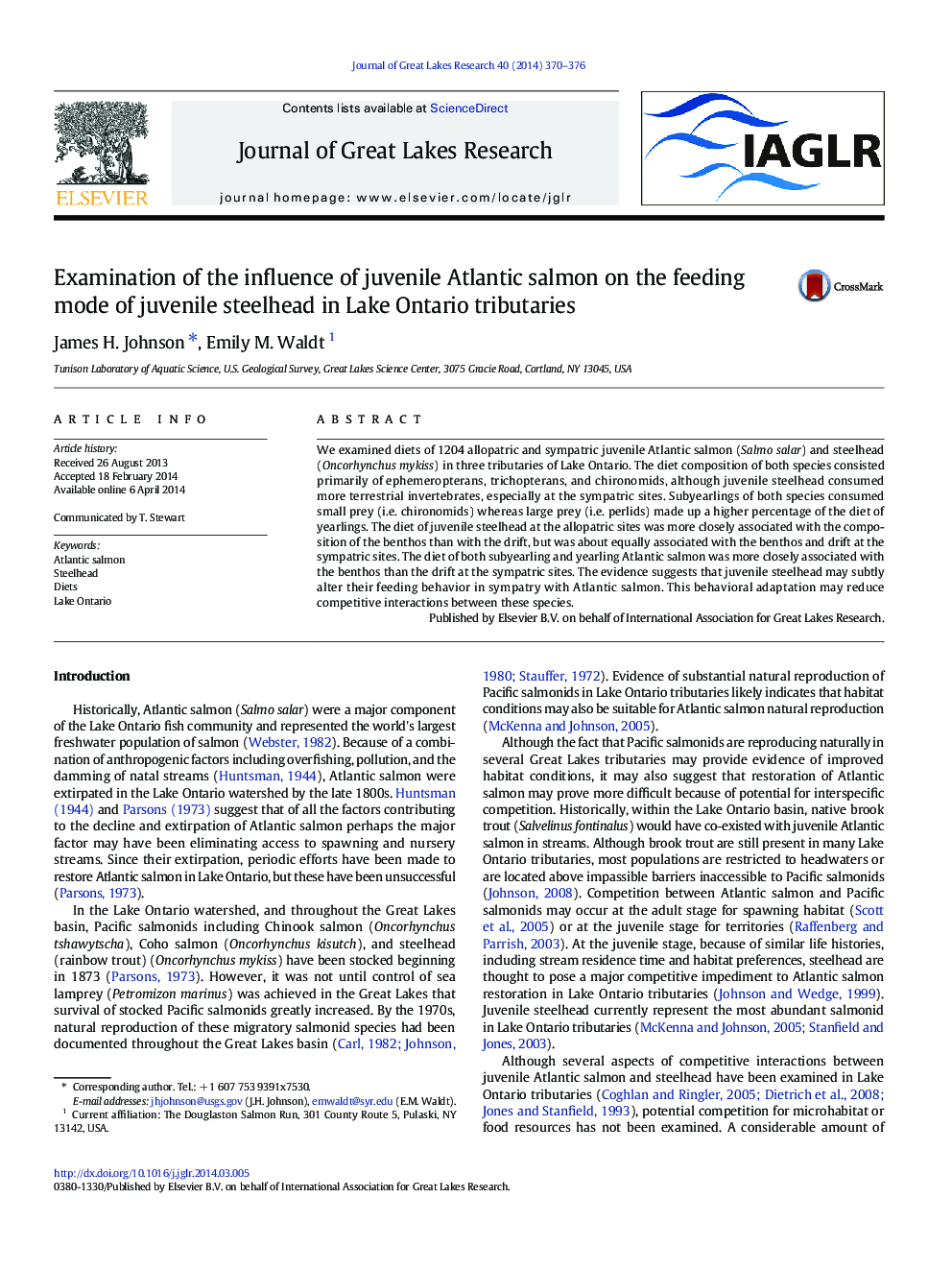| Article ID | Journal | Published Year | Pages | File Type |
|---|---|---|---|---|
| 6305224 | Journal of Great Lakes Research | 2014 | 7 Pages |
Abstract
We examined diets of 1204 allopatric and sympatric juvenile Atlantic salmon (Salmo salar) and steelhead (Oncorhynchus mykiss) in three tributaries of Lake Ontario. The diet composition of both species consisted primarily of ephemeropterans, trichopterans, and chironomids, although juvenile steelhead consumed more terrestrial invertebrates, especially at the sympatric sites. Subyearlings of both species consumed small prey (i.e. chironomids) whereas large prey (i.e. perlids) made up a higher percentage of the diet of yearlings. The diet of juvenile steelhead at the allopatric sites was more closely associated with the composition of the benthos than with the drift, but was about equally associated with the benthos and drift at the sympatric sites. The diet of both subyearling and yearling Atlantic salmon was more closely associated with the benthos than the drift at the sympatric sites. The evidence suggests that juvenile steelhead may subtly alter their feeding behavior in sympatry with Atlantic salmon. This behavioral adaptation may reduce competitive interactions between these species.
Related Topics
Physical Sciences and Engineering
Earth and Planetary Sciences
Earth and Planetary Sciences (General)
Authors
James H. Johnson, Emily M. Waldt,
